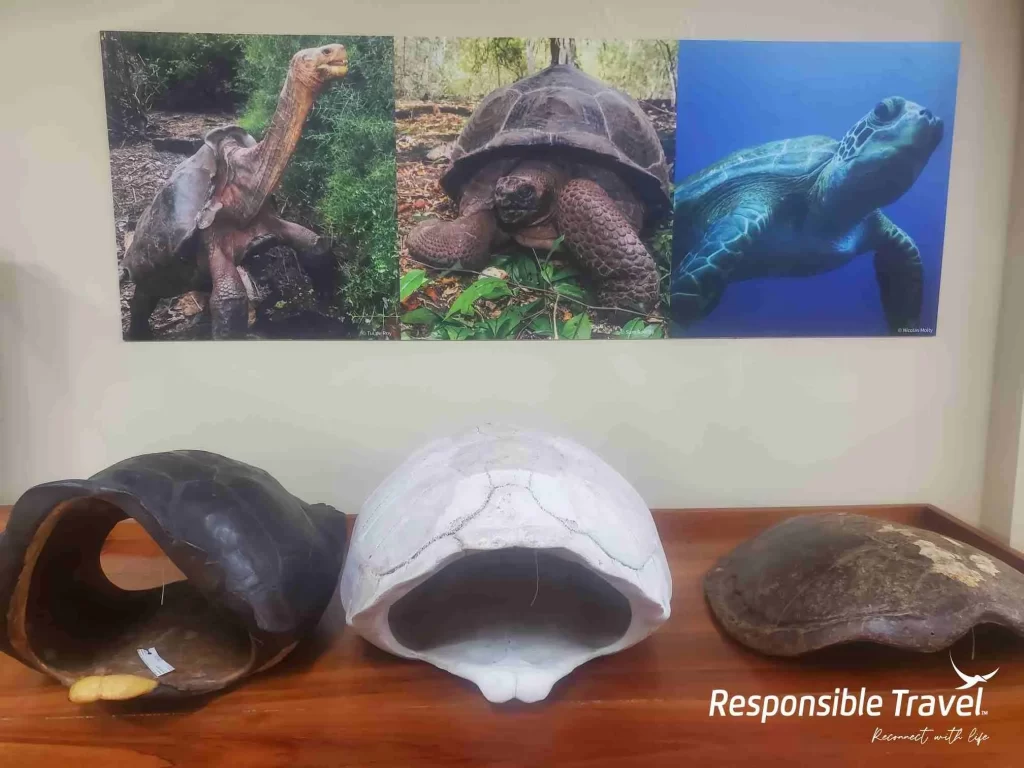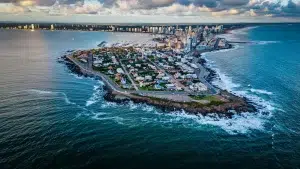Tourist sites in the Galapagos Islands were declared a World Heritage Site by UNESCO. They are a unique natural treasure on the planet, recognized for their exceptional biodiversity and their crucial role in the theory of evolution. The Galapagos Islands are located about 1,000 kilometers off the coast of Ecuador. This volcanic archipelago consists of 19 main islands, as well as numerous islets and rocks emerging from the Pacific Ocean.
What makes the Galapagos Islands so special is the extraordinary adaptation of their flora and fauna to an island environment. Over millions of years, the species that arrived on these islands adapted uniquely to their surroundings, giving rise to unique and often endemic life forms. This evolutionary process was closely observed by Charles Darwin during his famous voyage on the HMS Beagle in 1835, which eventually led to the development of his theory of evolution by natural selection.
The Galapagos archipelago offers visitors a unique opportunity to witness wildlife in its natural habitat, unafraid of humans. Iconic creatures, from giant tortoises to blue-footed boobies, sea lions, and marine iguanas, coexist in this pristine environment. In addition to its fauna, the Galapagos also amaze with their surreal landscapes, ranging from white sandy beaches to impressive volcanic rock formations.
Visit the Enchanted Islands on the cruise of your preference 🛳️🍃 Contact us now!

Prices of flights to Galapagos
Flight prices to the Galapagos Islands vary depending on the airline, season, how far in advance tickets are purchased, and the city of origin. Keep in mind that there are two main airports in the Galapagos Islands: Seymour Airport in Baltra (GPS) and San Cristobal Airport (SCY).
The average prices for flights from mainland Ecuador to the Galapagos Islands typically range between $250 and $600 per person for a round trip. You may find special offers or promotions at certain times of the year.
Visiting the tourist attractions of Galapagos on a cruise
Charles Darwin Research Station (Puerto Ayora, Santa Cruz Island)
This research station on Santa Cruz Island plays a crucial role in the conservation of the Galapagos Islands. Visitors can learn about conservation efforts, giant tortoise breeding, and other scientific projects. Additionally, there are nature trails that offer the opportunity to observe local flora and fauna.
The ECCD primarily focuses on scientific research and the conservation of the unique ecosystems of the Galapagos Islands. It collaborates closely with scientists, researchers, conservationists, and local authorities to address environmental challenges and promote sustainable practices.

Sierra Negra Volcano (Isabela Island)
The Sierra Negra volcano is one of the largest craters in the world and offers an impressive hike. The vast lava fields and volcanic landscapes make this a unique destination for geology enthusiasts. One of the most popular experiences for visitors is hiking to the crater’s edge. Guided hikes allow tourists to explore the immensity of the crater and enjoy spectacular panoramic views of the surrounding landscape and, on clear days, even nearby islands
Despite the seemingly inhospitable volcanic conditions, Sierra Negra hosts a unique variety of flora and fauna. During the hike, visitors can find endemic plant species and observe native birds.

Lava Tunnels (Isabela Island)
These underwater lava tunnels on Rabida Island form a fascinating labyrinth that visitors can explore through snorkeling. The rich marine life around Los Tuneles is another reason why this site is so special. The surrounding waters host a diverse array of marine life, including sharks, rays, tropical fish, and sea turtles. It is a popular spot for snorkeling and observing the unique underwater world of the Galapagos.
Visitors can explore Los Tuneles by walking through the lava tubes or, more commonly, by joining snorkeling excursions to enjoy the crystal-clear waters and observe marine life. The experience of swimming among the lava tunnels is unique and thrilling.

Dragon Hill (Santa Cruz Island)
The hike through Cerro Dragon on Santa Cruz Island offers stunning panoramic views. It is known for being home to unique land iguanas of the Galapagos. These iguanas differ from those found in other parts of the archipelago, and their reddish coloration sets them apart. Visitors can also spot flamingos in a nearby lagoon.
At the lower part of Cerro Dragon, there is a freshwater lagoon that attracts birds such as flamingos. It is a picturesque spot and a great place for observing aquatic birds.
From the top of Cerro Dragon, visitors can enjoy breathtaking panoramic views of the surrounding landscape, including the ocean and nearby islands.

Tortuga Bay (Santa Cruz Island)
Tortuga Bay is a beautiful beach with white sand and turquoise waters. It is an ideal place to relax and enjoy the beach, and it is also possible to observe marine iguanas.
This bay is home to marine iguanas, hermit crabs, seabirds, and occasionally, sea turtles that come to the beach to rest. The mix of terrestrial and marine species makes it a fascinating place for wildlife observation. Visitors can enjoy activities such as snorkeling to explore the nearby waters and observe the rich marine life, including tropical fish, rays, and occasionally, reef sharks. Additionally, the beach is perfect for relaxing and enjoying the scenery.
Frequently Asked Questions about Tourist Attractions in Galapagos
Yes, the station is open to the public, and visitors can learn about research and conservation in the Galapagos.
Generally, visitors take a boat from Puerto Villamil on Isabela Island and then hike to reach the volcano.
Visitors generally participate in guided boat tours and then engage in snorkeling activities to explore the tunnels from the water.
At Tortuga Bay, you can enjoy the beach, go snorkeling, observe marine iguanas, and relax in this beautiful natural setting.
Cerro Dragon is known for being home to unique land iguanas and offers opportunities to observe birds such as flamingos and frigatebirds.






